In the last five years, there has been an average of 56 incidents of communal violence per month. In the year 2014 alone, there were 644 incidents with a death toll of 95. The violence spans around the country but majority of such incidents take place in states such as Madhya Pradesh, Maharashtra and Uttar Pradesh. In the year 2012, these three states accounted for 45% of the total incidents in the country.
Apart from the states mentioned above, five other states stand out in terms of the number of incidents per year. They are Gujarat, Karnataka, Kerala, Rajasthan and Bihar.
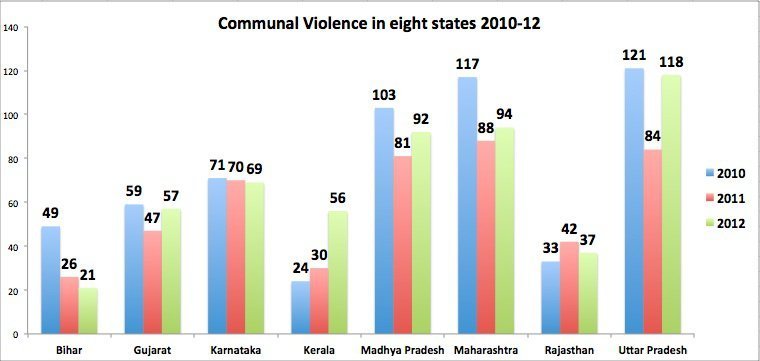
According to Census 2011, India has a massive minority population. There are over 138 million Muslims residing in our country, over 24 million Christians, 19 million Sikhs. It is common knowledge that Hindus and Muslims have been plagued by communal tension since before Independence. The states mentioned above have some of the largest Muslim populations in the country. They are also among the most divisive states in terms of caste and socio-economic status.
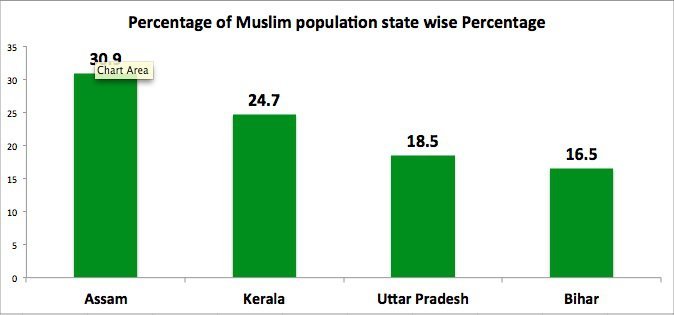
Out of the eight states mentioned earlier, three have the largest percentage of Muslim population in the country. The graph above shows the breakdown of the states. Assam has been shown in the graph because even though it may not have a high number of communal incidents, it has had one of the most bloody incidents in the country’s history – the Nellie Massacre, which killed over 2000 Muslims.
Factors contributing to communalism
There are a number of factors that contribute to communalism amongst religious groups in India. Each of these factors, individually and collectively, contribute to creating the communal atmosphere, in which even the mildest provocation can lead to irrational violence. Both Hindus and Muslims have played a part in the communally combustible situations in the past, and are thus, both equally responsible.
The communal incidents or riots are used as an occasion to give expression to pent up anger that individuals and groups have against the system as a whole. Some of the prime causes for this anger are lack of respect for the other, joblessness, poor socio-economic status, inadequate housing, and other basic civic amenities. It also has a great deal to do with the lack of hope that things will improve in the near or far future.
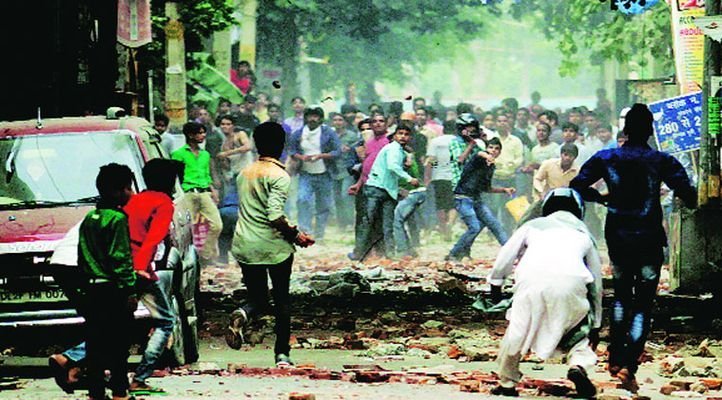
Every communal riot or violent incident sharpens the separate identity of the communal group, especially the minority group. The rioter burns houses, loots businesses and in some cases kills people, because for that moment he and his fellow rioters have an identity. The police confront them and the government appeals to them, and for once on that occasion, they have the satisfaction of being noticed as individuals in their own right. This conclusion falls as a subset under the larger umbrella of reasons for communal flare-ups.
The ethnification of Indian politics does not help either. This is the tendency of voters to vote along ethnic or caste lines and political parties using this to their advantage. This ends up promoting the role of communal leadership. Thus, over time, communal leaders develop a vested interest in communal riots, as with each riot, the need for a communal leader increases.
From 2010-2014
Between 2010 and 2014, there were over 3,373 incidents of communal violence in the country, and over 524 people were killed.
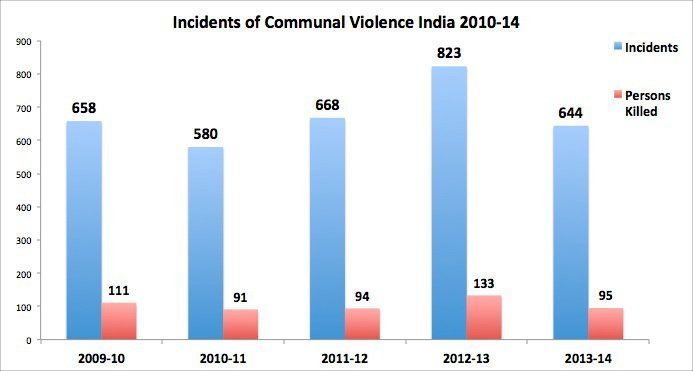
So what can the govt do to curb communal violence?
The Narendra Modi-led government has publicly stated it has a zero tolerant policy for any form of communal violence. The Prime Minister stated a joint committee will be set up to formulate a national policy in consultation with states to tackle the problem.
However, the BJP had initially opposed the UPA government’s plan to enact a stringent Communal Violence Bill, terming it as ” the most obnoxious piece of legislation in independent India”.
They believed it would affect the federal structure of the State, as the bill facilitates the need for central assistance in the case of any communal riot.
Once in power though, the NDA government enacted their own methods to curb communal violence. Modi announced the importance of providing equal opportunity to minorities, and development for all. The value of this is that minorities will benefit from central government schemes designed to uplift their living conditions. This in turn, will reduce the animosity felt towards the majority communities. However, this will only be the case if the government actually implements these ideas.
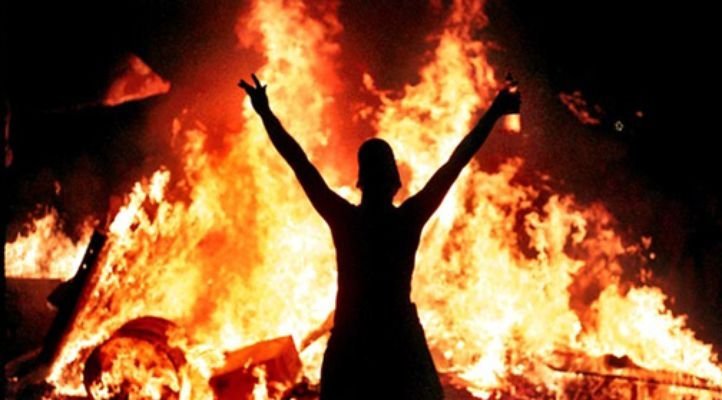
It is the system of ‘othering’ where one community substantiates through the smallest instance that the ‘other’ is out to get it. For instance, last year in Muzzaffarnagar, UP, anti-Muslim riots broke out resulting in a great deal of violence. The cause for this eruption of hatred? A simple rumour in the form of a video.
Two bearded men – evidently Muslim clerics – were beating two Hindu boys mercilessly. The video spread through the town and that was all the proof that was needed. The government stated that it was a fabricated video and indicted a number of people including a BJP MLA in the matter. However, that did not matter to the rioters.
When it comes to fuelling religious angst, even an unlit match will do.
If political leaders continue to egg on communal tension, the violence will never stop. Improving the living conditions of minority groups will help in the long run, but in order to protect the secular framework of this country, the government needs to introduce a strong communal violence bill. There should be legitimate debates about specific provisions of this complex and sensitive legislation, but not about its objectives of preventing communal violence and ensuring compensation and justice to survivors.

















